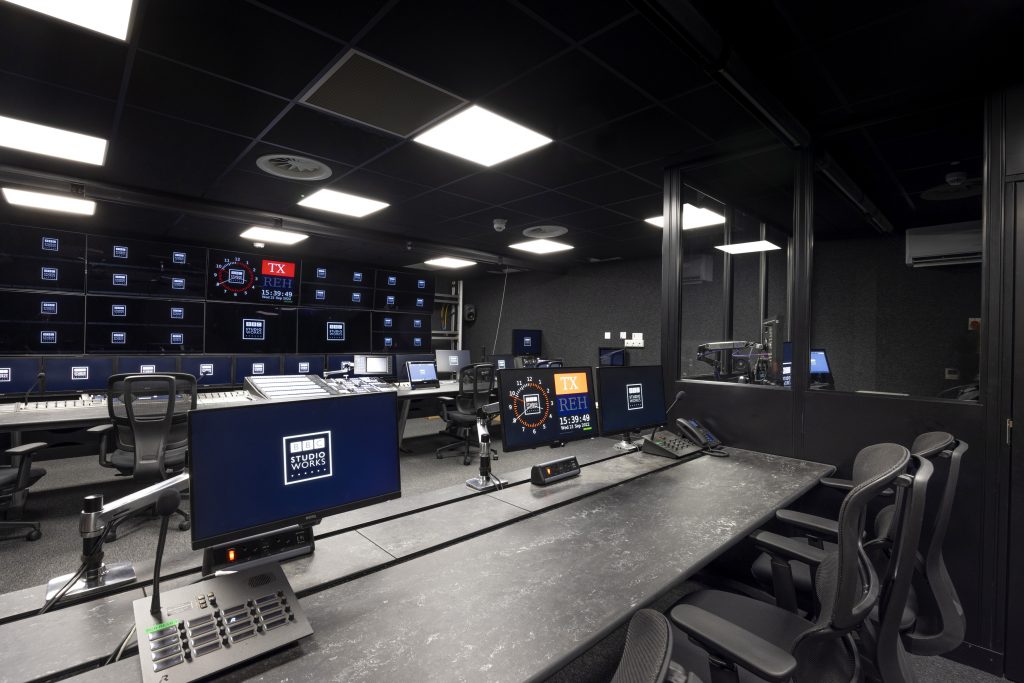Research: Low studio utilisation fuels demand for dynamic media operations
August 28, 2025

Broadcasters’ studio infrastructure is only used to make TV shows for a small proportion of the time available: one European public service broadcaster estimated its studio utilisation at less than 10 per cent. This is the reality uncovered in a report from Caretta Research which explores the accelerating shift towards software-defined workflows running on commodity off-the-shelf (COTS) hardware.
Yet a critical disconnect around cost predictability is impeding faster adoption. While the media industry acknowledges the benefits of dynamic operations, enjoying the scalability and enhanced efficiencies, uncertainty surrounding pay-as-you-go software licensing and the difficulty in forecasting total cost of ownership (TCO) remain substantial barriers. This risk aversion is slowing the transition to flexible, software-based solutions on COTS hardware, despite the long-term advantages.
The report, Media infrastructure utilisation matters, highlights how media organisations increasingly crave the agility, scalability, and efficiency offered by dynamic, software-based infrastructure. Some media technology vendors are innovating with pay-as-you-go models but buyers, accustomed to traditional CAPEX models, demand clarity and certainty about costs, especially avoiding ‘bill shock’ from overage charges.
Widespread underutilisation of expensive studio infrastructure underscores the financial and sustainability benefits of dynamic media operations. By shifting from dedicated hardware to flexible, software-on-COTS solutions, media companies can reconfigure resources rapidly, maximise infrastructure utilisation and significantly reduce wasting resources such as rackspace, electricity and cooling, generating considerable efficiencies compared to historic utilisation patterns.
“Low and unmeasured utilisation delivers huge inefficiencies in traditional media operations,” said Ed Barton, research director at Caretta Research. “While the industry clearly sees the value in moving everything to software, vendors must step up to simplify pricing, provide predictability and help buyers accelerate transition to these new models.”
The report highlights key considerations media organisations must consider to drive utilisation and transition to dynamic media operations. These include:
-
Total cost of ownership (TCO): This is the ultimate financial driver, calculated over three to five years, encompassing not just upfront costs but also ongoing expenses like cooling, electricity, maintenance, staffing and support.
-
CAPEX vs. OPEX preferences: While TCO is paramount, the choice between capital expenditure (CAPEX) and operational expenditure (OPEX) is rooted in past habits. Broadcasters often adopt a hybrid approach, valuing cost predictability while fearing excessive overage costs from services using pay-as-you-go pricing.
-
Longevity and predictability of systems: Broadcasters are conservative about changing core systems, preferring software that can last for decades. However, for rapidly evolving areas like AI and ad tech, they are reluctant to enter long-term agreements due to frequent technological changes.
-
Infrastructure utilisation: Monitoring system usage is crucial for efficiency and ROI. Broadcasters typically spec facilities close to top-level capacity, offloading to cloud platforms for infrequent, high-burst demands, to avoid maintaining equipment for rare peak demands.
-
Flexibility and scalability: There’s a strong desire for virtualised, software-based solutions on commercial off-the-shelf (COTS) hardware, allowing for easy workload movement and flexible licensing for event-based or short-term needs.
-
Vendor support and continuous upgrades: Broadcasters expect all upgrades, including security updates, to be part of the package. However, they are wary of hidden service-level agreement (SLA) costs in flexible licensing models.
-
Management overhead of flexible systems: A significant concern with floating licence or credit-based systems is the perceived complexity and administrative burden, stemming from past issues with licensing servers and tracking usage.
Ultimately, by embracing dynamic media operations, organisations can not only optimise their technology spending but also enhance their competitiveness by producing better programming more efficiently, concludes Caretta Research.
Other posts by :
- Deutsche Bank reveals targets for AST SpaceMobile
- AST SpaceMobile boss outlines benefits
- Report: LEO build-out accelerates
- Germany outlines space commitment
- Analysis: Impact of AT&T on US telcos and cable
- Bezos rocket production boosted
- Musk delays Moon landing until 2027
- Hughes Satellite facing cash crunch
- Major banks support AST SpaceMobile
